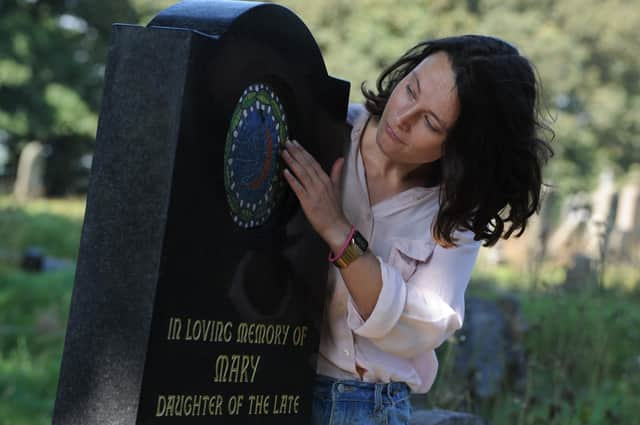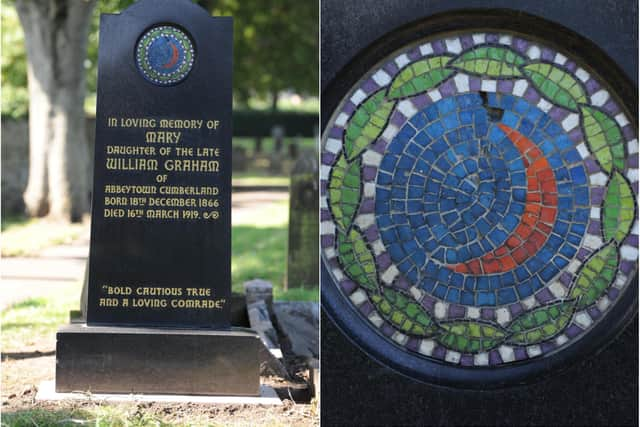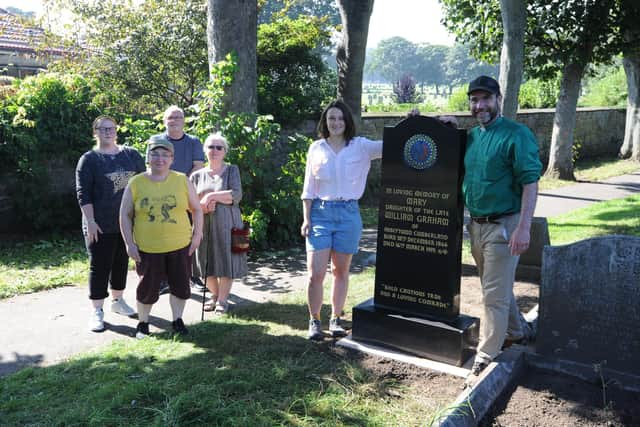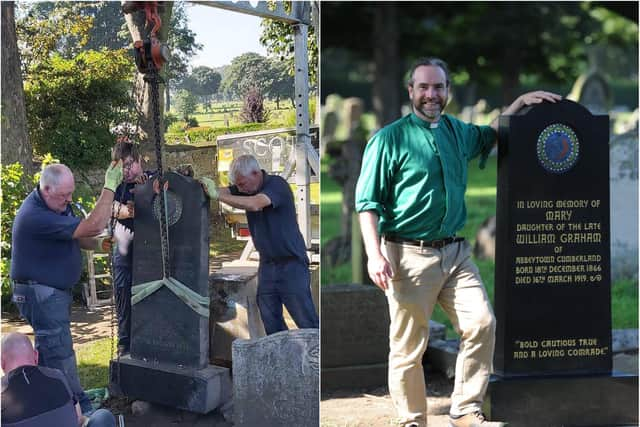Beautiful mosaic grave of woman believed to be a suffragette is restored at a Sunderland cemetery


The grave of ‘Mary’ has be restored at Mere Knolls Cemetery today (September 8) by the Friends of Sunderland cemeteries and the National Glass Centre after it was found covered in mud and with tiles missing.
Catriona and Chris Howson, who run the cemetery Facebook group, noticed the grave had an incredible mosaic.
Advertisement
Hide AdAdvertisement
Hide AdIt’s believed the mosaic is the work of Edwin Smyth, Sunderland’s most famous monumental mason.


The origins of the person buried remain largely unknown but the inscription does give some insight into Mary’s life.
It reads: “In loving memory of Mary daughter of the late William Graham of Abbeytown Cumberland. Born 18th December 1866 Died 16th March 1919. Bold, Cautious, True And A Loving Comrade.”
The Friends of Sunderland cemeteries, who organise weekly litterpicks around Bishopwearmouth, Mere Knolls and Sunderland cemeteries, found that she was born in Cumbria, and was married under the name of Mary Robinson.
Advertisement
Hide AdAdvertisement
Hide AdMary had lived in Coventry for a while, and her husband Charles Edward Robinson worked as a clerk at Daimler Motors during the 1911 census.


Archives show that she died while living at 3 Roker Terrace, but nothing else of her life has been remembered.
According to the group her gravestone shows that she may have had a radical side with the colours of the wreath mirroring those of the suffragettes.
Purple stood for loyalty, white for purity and green for hope and the line of poetry is taken from Walt Whitman’s ‘As toilsome I wandered’ and was used on the graves of radical socialists.


Advertisement
Hide AdAdvertisement
Hide AdRevd Chris Howson, who is the Chaplain at the University of Sunderland said: “There is something about Mary that shows she was quite a character, and we would love to know more about this amazing woman.
"She died during the Spanish Flu epidemic and the beauty and boldness of her grave speaks volumes in itself."
Revd Chris added: “Thanks to the many members of Friends of Sunderland Cemeteries who have contributed to make sure that her burial place is honoured for another 100 years, perhaps a place to remember all the radical women who died without the recognition that they deserved.”
